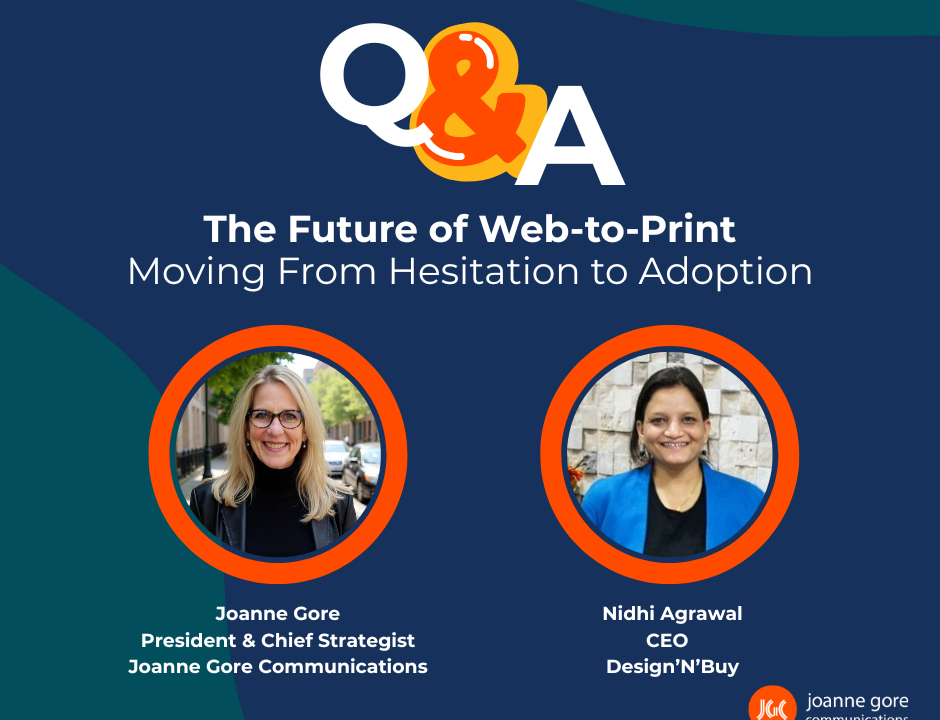The Evolving Role of Customer Experience: From CCM to Opti-Channel Engagement
Forrester Research projects that the companies who thrive are the ones who treat experience as the centerpiece of their growth strategies, not as an afterthought. In 2025, customer experience is widely recognized as a leading brand differentiator, often outpacing price and product in importance. When customers are willing to pay premiums for better experiences, they are also quick to leave when they feel ignored.
A single negative interaction can undo months of loyalty.
From CCM to Customer Experience
Back in 2018, at industry events like Xploration, it became clear that production print and customer communications were colliding. Print providers were transforming from output vendors into experience architects, handling millions of highly personalized, regulated communications across multiple channels.
Fast-forward to 2025, and those early signals have become reality. No longer living in silos, customer engagement orchestrates the entire journey, making sure every interaction is relevant, contextual, and consistent – whether it arrives in the mailbox, inbox, or a social feed. This shift builds on lessons learned from the world of Customer Communications Management (CCM) and direct mail and is further championed by the cXm Professionals Association (CXMPA), a not-for-profit community of industry experts advancing CCM and customer experience. Joanne Gore, a founding board member with over 25 years of industry experience, has helped guide CXMPA’s mission to modernize communication strategies and foster meaningful customer engagement.
“Where once CCM was defined by bills and statements, it has expanded into a powerful, integrated practice delivering personalized insurance notifications, investment updates, and healthcare reminders”, says Joanne. “These customer communications touchpoints are intentionally designed to meet customers where they are, bridging the gap between physical and digital experiences – and expectations.”
Print + Digital = A Unified, Opti-Channel Journey
A decade ago, multi-channel strategies were a breakthrough. They promised to reach customers everywhere. But in practice, they often resulted in fragmented experiences with different messages on different channels with no cohesion.
Today, consumers want both the tactile reliability of print and the seamless convenience of digital. USPS data shows that 87% of millennials still appreciate direct mail yet they also expect instant mobile engagement.
This dual demand creates an opportunity for brands to design hybrid journeys, where print and digital is synergized:
- A personalized direct mailer leading to an augmented reality (AR) experience.
- A printed statement with a QR code unlocking a self-service app.
- A loyalty card in the mailbox paired with a personalized push notification.
When executed properly, each channel reinforces the other, amplifying trust, engagement, and conversion.
Five Essentials for Opti-Channel Success
Customer loyalty and brand equity are dependant on how well brands connect every customer interaction into one cohesive journey that leads to action. The strongest organizations are creating experiences that are personalized, data-driven, and consistent across print and digital touchpoints.
These five essentials outline the core principles that help brands build opti-channel strategies that drive engagement, trust, and measurable results:
- Know your audience – Go beyond demographics. Use behavioural data, triggers, and contextual insights.
- Be consistent – Align tone, visuals, and messaging across touchpoints, from direct mail to social media.
- Personalize deeply – AI-powered segmentation makes personalization more relevant than a name swap.
- Stay agile – Continuously measure, test, and adapt. Channels and customer preferences evolve quickly.
- Blend print and digital – Print provides trust and memorability; digital delivers immediacy and interaction.
The Role of Automation and AI
What began as “workflow automation” in CCM has grown into AI-driven personalization at scale, enabling businesses to mitigate problems before customers even voice them and provide superior customer experiences with:
- Hyper-personalized offers that reflect buying history and predicted behaviours.
- Real-time channel selection, adjusting delivery based on open rates, engagement, or location.
- Consistency and compliance across industries like health care, insurance and finance
- Agility to pivot strategies instantly when market conditions change.
The takeaway? Experience-driven companies build stronger relationships, increase lifetime customer value, and generate measurable ROI from their communications strategy.
Want to learn more about creating value for your customers?
Watch: How to Become an Indispensable Partner for real life tips and experience on building the best relationships.




